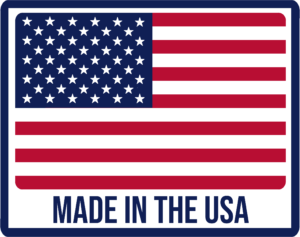
As the seasons change, maintaining the performance of your Active Vehicle Barriers (AVBs) is essential to ensuring continued safety and security. Barrier1 Systems offers a range of AVBs—such as Nets, Crash Beams, Wedge Barriers, Retractable Bollards, and Electric Drop Arms—that are designed to withstand harsh environmental conditions. However, performing routine maintenance during the fall and winter months ensures optimal performance and longevity.
In this blog, we’ll discuss the importance of seasonal maintenance, key safety guidelines, and specific maintenance steps for each type of barrier system to keep them functioning reliably as colder weather approaches.
Key Safety Guidelines for Maintenance
Before performing maintenance on any AVB system, it’s important to follow these safety measures:
- Notify guards and other personnel when maintenance is being performed to prevent accidents or disruptions.
- Place cones across both sides of the road, park vehicles sideways to block access, and have a maintenance technician monitor traffic control.
- Use Personal Protective Equipment (PPE): Gloves, hard hats, eye protection, steel-toe shoes, safety vests, and other PPE when applicable.
- Have two people onsite for all maintenance tasks in case of accidents and ensure that all staff are aware of emergency procedures.
- Be aware of all potential safety hazards including crushing, pinching, burns, cuts, high pressure, and electric shock.
- Ensure technicians have Barrier1 Systems’ contact information readily available in case they have any questions during maintenance.
Specific Maintenance for Barrier1 Systems’ AVBs
Each type of Barrier1 system requires unique maintenance tasks. Below is a breakdown of key actions for each barrier type.
Wedge Barriers
- Remove debris inside the housing to prevent buildup that could hinder barrier function.
- Verify that all drains are clear to ensure proper water flow and avoid freezing in cold weather.
- Inspect electric actuators and tighten any bolted connections as needed.
- Check clearances around the lid to ensure there is no obstruction or friction during operation.
- Inspect the barrier’s opening and closing movements for smooth, continuous motion.
- Inspect traffic lights associated with the wedge barrier to confirm proper illumination, depending on the barrier’s position.
Net Barriers
- Inspect hydraulic fluid levels and filters to ensure the system runs efficiently.
- Inspect the outside enclosure—including doors, door locks, concrete anchors, and weatherproofing on both ends.
- Check the space heater temperature inside the box enclosure and adjust as needed to prevent freezing.
- Remove debris from the end support enclosure and inside the trap.
- Ensure the trap drain on the static side is clear and free of debris.
- Inspect the trap lid operation, applying grease to hinges if necessary.
- Inspect caulk on safety loop cuts and reapply caulk if needed.
- Inspect compression springs and connections for wear and proper attachment.
- Inspect signs, bolted connections, and signal lights for clear visibility and functionality.
- Grease all moving parts, pulley wheels, and any other friction points.
Horizontal Crash Beams
- Visually inspect the barrier arm, all components, cables, connections, lights, and the electric actuator while the system is in use.
- Tighten any loose bolts, nuts, and connections and look for any rocking or unusual movement at the pivot side.
- Clean out the trap to remove all dirt, debris, and snow to ensure smooth operation.
Manual Retractable Bollards
- Inspect the gravity drain about 30 inches down from the top to ensure it is not blocked.
- Remove the top bollard lid and lift out the bollard and steel frame using a chain or strap. Do not disconnect the bollard tube from the steel frame.
- Vacuum out any water and debris inside the hole and inspect the Teflon wear plates for wear.
- Reinstall the steel frame and bollard, then reattach the lid.
Electric Drop Arms
- Test the heating components to ensure they are working properly, preventing freezing in cold temperatures.
- Inspect the electric actuator, looking for any signs of wear or malfunction.
- Ensure the drop arms move smoothly, with no ice or snow blocking their range of motion.
Importance of Drainage and Debris Management
Regardless of the type of AVB, ensuring proper drainage and debris removal is critical during fall and winter. Nets, Crash Beams, and Wedge Barriers all include underground traps or channels with drains that prevent water accumulation, which could freeze and interfere with barrier operation. Regularly checking these drains and clearing any blockages will help avoid operational issues caused by frozen water or debris buildup.
Why Fall and Winter Maintenance is Critical
While Barrier1 Systems’ AVBs are built for resilience, proper seasonal maintenance ensures they continue to operate smoothly and reliably:
- Cold temperatures can affect hydraulic systems, so checking fluid levels and filters helps prevent issues with responsiveness.
- Snow, ice, and debris can obstruct the movement of bollards, barriers, and traps. Clearing these obstructions regularly helps maintain uninterrupted operation.
- Regular system checks and tests ensure all components, such as sensors and actuators, are working properly and that any issues are addressed before they cause downtime.
Conclusion: Ensure Long-Term Performance with Seasonal Maintenance
By taking proactive steps to maintain your Active Vehicle Barriers during the fall and winter, you can prevent avoidable issues and ensure they continue functioning at their best. Following the recommended safety procedures and completing the necessary maintenance tasks will help extend the life of your AVBs and keep your facility secure year-round.
For questions or to schedule professional maintenance, visit barrier1.com/contact-us, email services@barrier1.com, or call 336-617-8478. We’re here to help ensure your systems remain reliable no matter the season.

